The Franciscans in Medieval Ireland: Sources / Kilcullen Franciscan Friary, County Kildare
- Elaine Harrington
- March 22, 2023
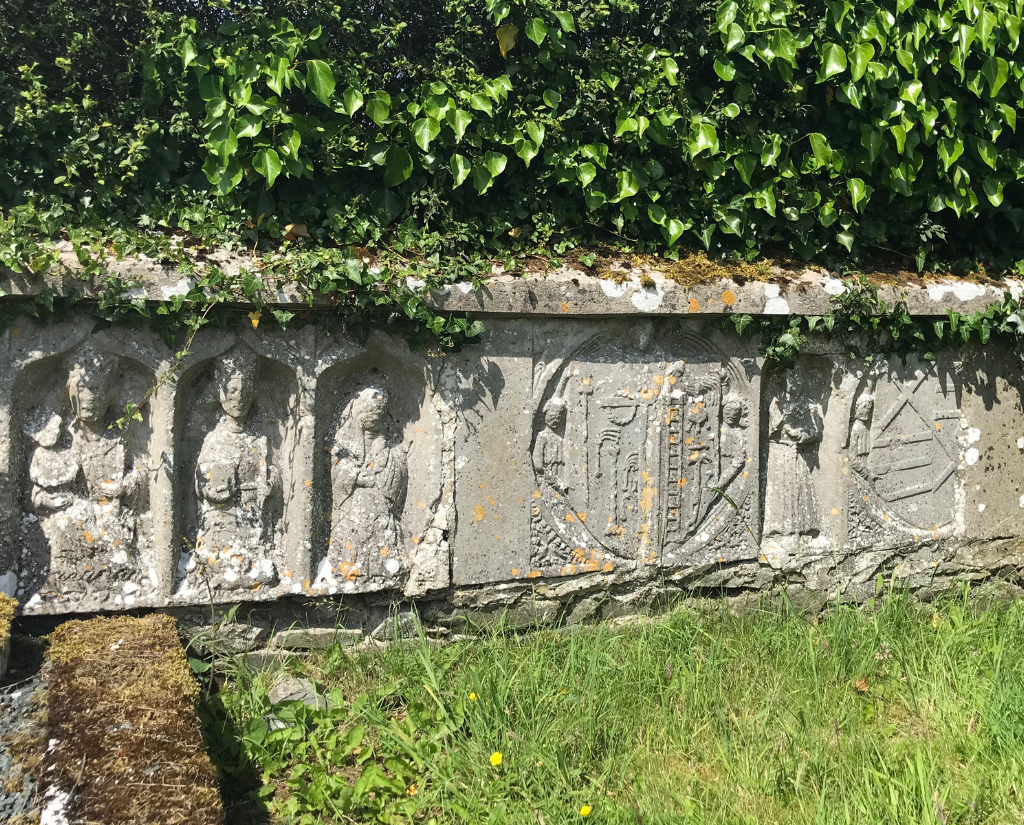
Student Exhibition, MA in Medieval History
Donatus Mooney (1577-1624), whose work is referenced in two other blog posts of this series on medieval Franciscan houses in Ireland, was a Franciscan friar and historian. In his role of the Irish Provincial (elected in 1615), he made visitations to the friaries around Ireland and later wrote an account of his travels in Louvain, between 1617 and 1618.
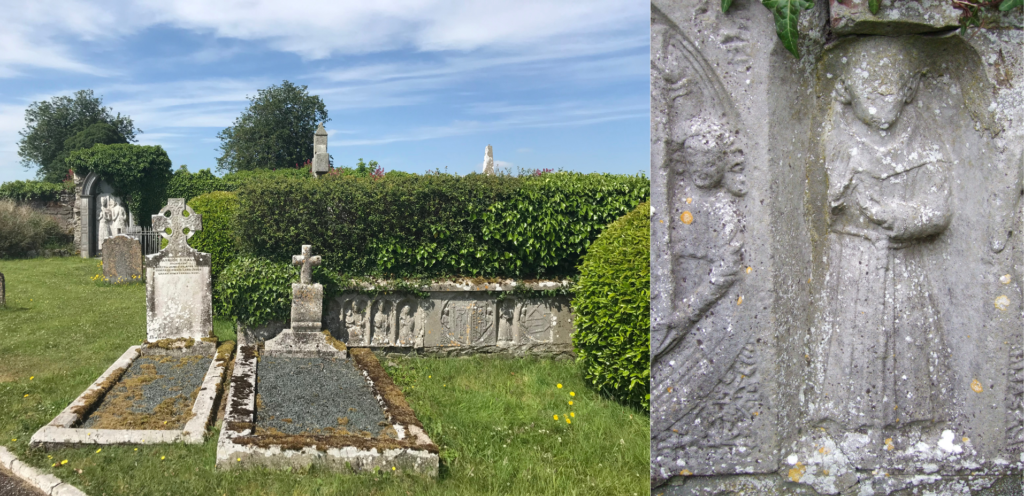
Mooney’s description of Kilcullen friary in A History of the Franciscan Order in Ireland states that the friary was situated ‘in the diocese of Dublin, eighteen miles from that city, near the bridge of Killcullen, a highway to Munster’. According to Mooney, the friary was an Observant foundation established in 1486 by a member of the FitzEustace family and it served as a burial place for ‘the chief families of the district’.
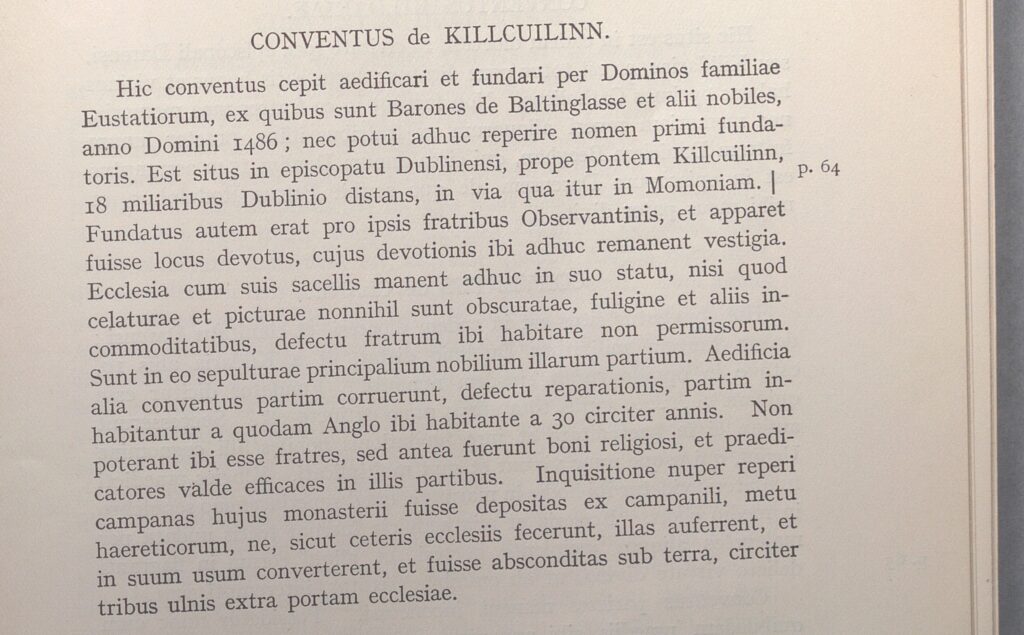
Other seventeenth-century sources including The Annals of the Four Masters (compiled between 1632 and 1636) and James Ware’s (1594-1666) De Hibernia et antiquitatibus eius confirm 1486 as a foundation date and name Roland FitzEustace, Baron of Portlester as the founder, the latter also adds that Roland was buried in Kilcullen friary.
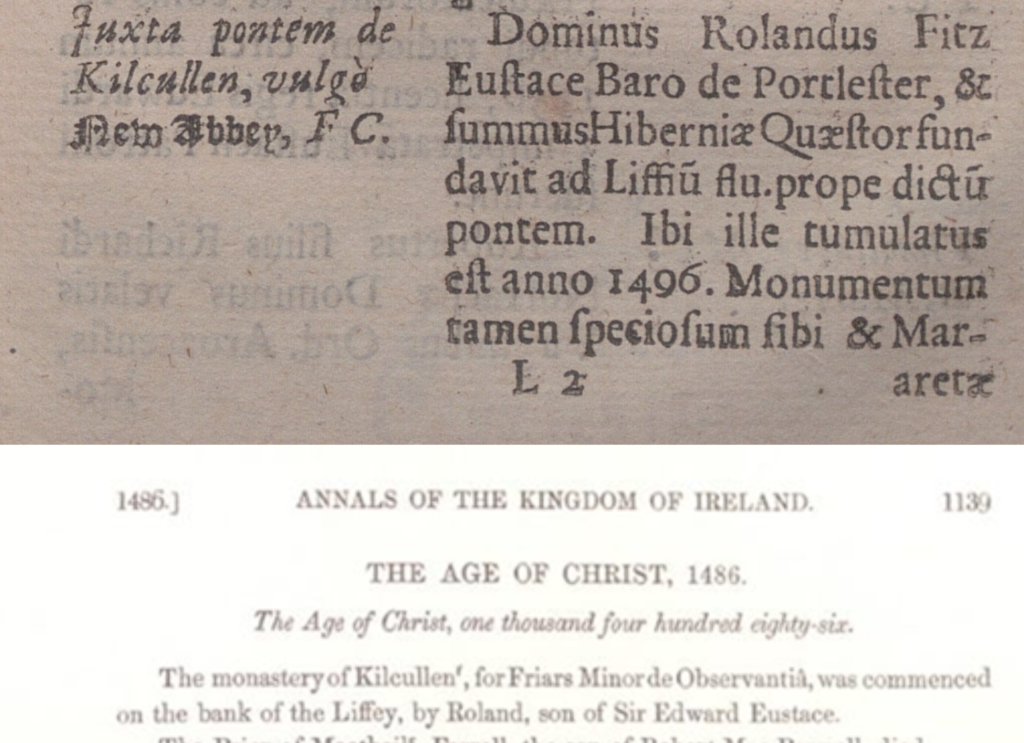
The guardian and Observant Franciscans of the house, juxta pontem de Kilculyne were mentioned at a Dublin provincial council on 5 March 1494.
Roland FitzEustace was the son of Sir Edward FitzEustace and was married to Margaret Janico. Roland was an important political figure in late fifteenth-century Ireland: he was appointed the Treasurer of Ireland in 1454 and Chancellor between 1486 and1492, in 1462 he was made Baron of Portlester. A monument with the effigies of Roland and Margaret is still seen in Kilcullen, in the graveyard located on the site of the medieval friary. Another monument with a similar portrait of the couple was built in Dublin at Saint Audoen’s church. According to The Annals of Ulster Roland died between two Nativities, 25 December and 6 January in 1496.

In 1539 the friary was ‘found to be seized’ of a church and belfry, a dormitory, hall, two chambers, and a kitchen, a cemetery, orchard and garden; also a garden and a park of pasture, containing in the whole eight acres’.
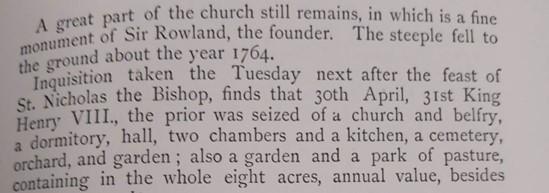
In 1540, Thomas FitzEustace, Lord of Kilcullen occupied the friary as listed in Extents of Irish Monastic Possessions, 1540-1541.

The friars were expelled from the friary in 1547, the first year of King Edward VI’s reign according to Francis O’Mahony’s Brevis Synopsis.
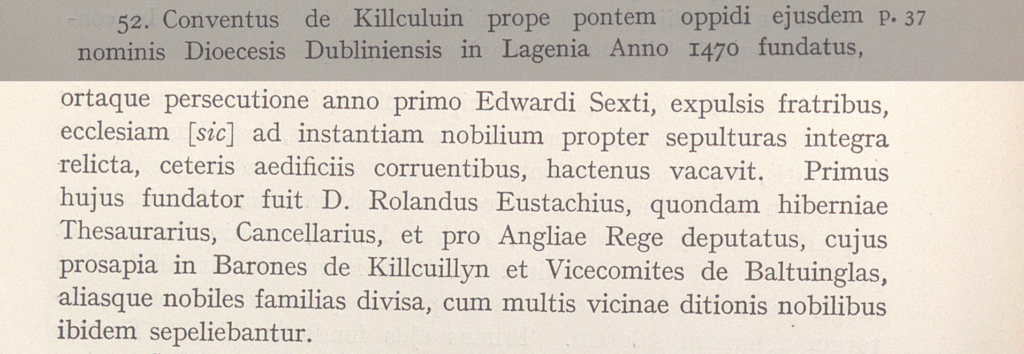
In 1554 the guardian of the friary and the community begged that Kilcullen be restored, information recorded by the nineteenth-century historian and priest Charles Patrick Meehan (1812-1890) in his Rise and Fall of the Irish Franciscan Monasteries, published in 1869, and then revised by him in 1870, 1872 and 1877.
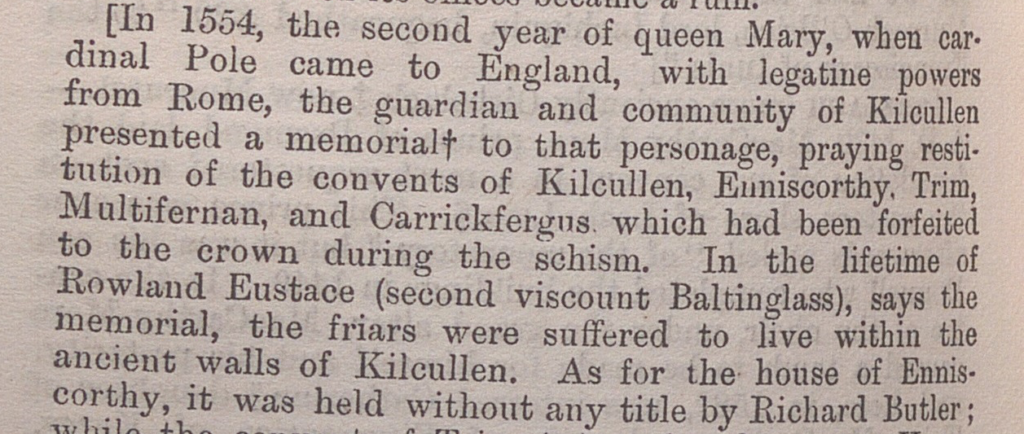
Few years later, in 1582 Kilcullen house was granted to Edmund Spencer for a rental price of £3, the information provided by Mervyn Archdall (1723-1791) in his Monasticon Hibernicum. According to Donatus Mooney, the friary’s bells and other religious items had to be removed for safe keeping, probably around that time.

Not much remains of the medieval friary except the FitzEustace’s burial monument, a tomb with figures of the saints (including Saint Francis) and some fragments of medieval fabric that were incorporated in the late eighteenth century in building a new chapel.
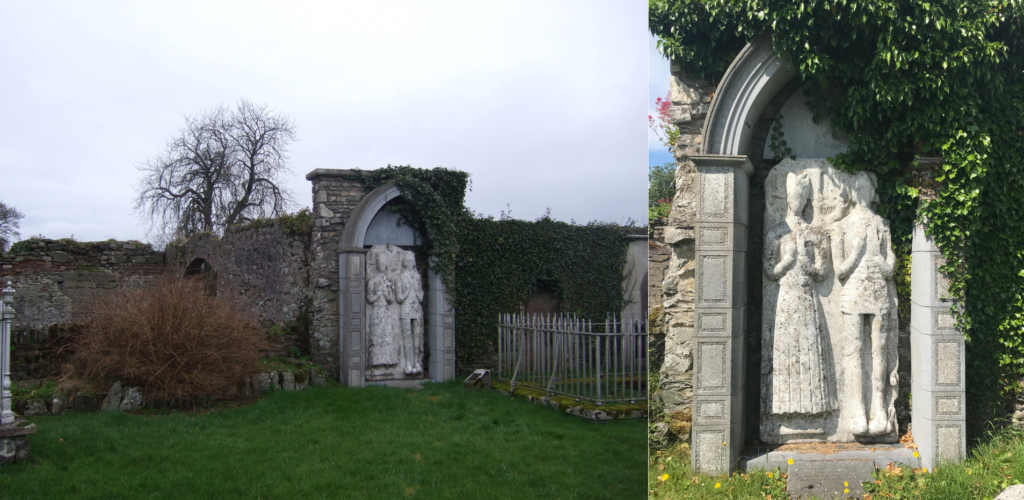
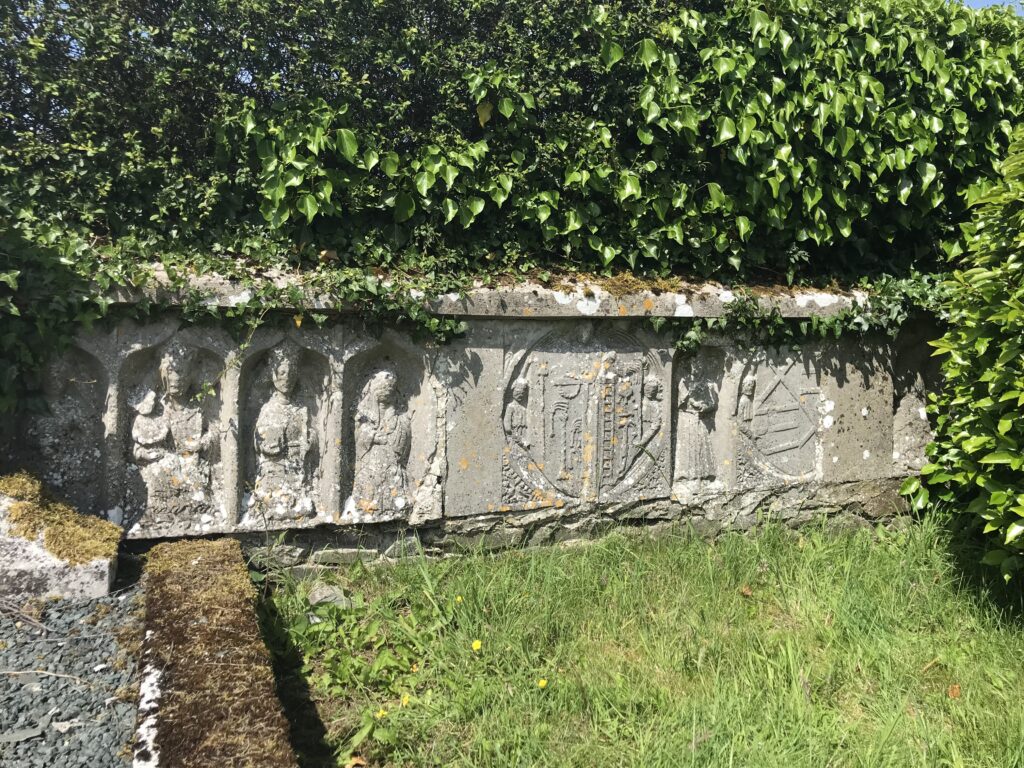
Bibliography
- Archdall, Mervyn. Monasticon Hibernicum; or, A History of the Abbeys, Priories, and Other Religious Houses in Ireland: Interspersed with Memoirs of Their Several Founders and Benefactors, and of Their Abbots and Other Superiors, to the Time of Their Final Suppression, edited, with extensive notes, by the Right Rev. Patrick F. Moran. Dublin : W.B. Kelly, 1873-76.
- Hunt, John, Irish Medieval Figure Sculpture, 1200-1600: A Study of Irish Tombs with Notes on Costume and Armour, Dublin: Irish University Press, 1974.
- Jennings, Brendan, ‘Donatus Moneyus, De Provincia Hiberniae S. Francisci’, Analecta Hibernica, vol. 6, 1934, pp. 12–138.
- –––, ‘Part II: Brevis Synopsis Provinciae Hiberniae FF. Minorum’, Analecta Hibernica, vol. 6, 1934, pp. 139–191.
- MacCarthy, Bartholomew, ed., Annals of Ulster: Otherwise, Annala Seanait; Annals of Senat/a Chronicle of Irish Affairs from A. D. 431, to A. D. 1540., vol. 3: 1379-1541, Dublin: A. Thom & Co. Ltd, 1887-1901.
- Meehan, Charles Patrick, The Rise and Fall of the Irish Franciscan Monasteries, and Memoirs of the Irish Hierarchy in the Seventeenth Century; with Appendix Containing Numerous Original Documents, Dublin: James Duffy, 1872.
- Moloney, Joseph, ‘Part III: Brussels MS. 3410: A Chronological List of the Foundations of the Irish Franciscan Province’, Analecta Hibernica, vol. 6, 1934, pp. 192–202.
- O’Donovan, John, ed. and transl., Annala Rioghachta Eireann: Annals of the Kingdom of Ireland by the Four Masters, Dublin: Hodges and Smith, 1851.
- Ware, James, De Hibernia et antiquitatibus eius, Dublin: Typis J. Grismond, impensis Jo. Crook & Thomae Heath, 1654.
- White, Newport D., ed., Extents of Irish Monastic Possessions 1540-1541, Irish Manuscripts Commission, Dublin: Stationery Office, 1943.
Shane Lynch
